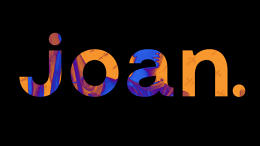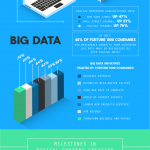Why Every Business Should Use “Irregular Thinking” To Find Breakthrough Ideas
“Talent is fleeing the advertising world, we have a horrible diversity problem, and we have competition from our former partners and even our clients,” says Jaime Robinson, cofounder of the creative agency Joan. “We needed to look at every part of our business.”
And that’s exactly what Robinson and her cofounder, Lisa Clunie, did when they created Joan last spring. The duo used a process they call “irregular thinking” in order to find breakthrough ideas and set the company on a successful trajectory.
“We need to find the innocence to ask questions about why things work the way they do,” says Clunie, the former COO of Refinery 29, during a gathering at the Fast Company Innovation Festival. For every bit of accepted orthodoxy about the advertising business, Robinson and Clunie forced themselves to ask, “Is that really true?” To wit:
- Why shouldn’t the client collaborate on ideas?
- Why are all the client’s ideas stupid?
- Why are there no margins in the ad business?
- Why are ideas and media seen as two separate things?
- Why are consumers not seen as people?
- How come agency employees can only do one thing?
- Why should only the partners benefit from the agency’s success?
The answers to these questions helped the cofounders to form a very different kind of agency. Joan has adopted a design sprint model, so that fewer, better people move faster at getting to a great idea. The agency has “productized” its offerings to companies so it doesn’t get bogged down in negotiating the terms of every relationship. Each Joan employee receives equity in the agency, which is apparently unprecedented in the advertising world. Similarly, employees will get trained on new platforms as they emerge.
“We have to understand these platforms to break their rules,” says Clunie. Then again, Joan is not interested in remaining in the insular hothouse of adland: Fifty percent of its hires come from outside the industry. “We want great, interesting, weird ideas from those people,” says Robinson, the former executive creative director of Wieden + Kennedy New York. As such, every employee has access, via Slack, to clients’ creative briefs, and everyone is encouraged to contribute in the rolling conversations.

“You have to be both educated and naive,” says Clunie, explaining the tricky balance they seek. To inspire FCNY attendees to embrace their brand of irregular thinking, Clunie and Robinson engaged them in an exercise: How would you fix the Department of Motor Vehicles? Here’s a taste of the “why does it have to be that way” questions that arose:
- Why is there always a line?
- Why don’t you know that you can make an appointment?
- Why is there a physical location?
- Why can’t you change your picture?
- Why do you need a physical license?
- Why are there no colors?
- Why is there no drive thru?
- Why is it so boring?
After asking these questions (and many others), we turned to solutions. The creative process was far more open and freewheeling after eliminating all the preconceived assumptions. With any luck, we’ll collectively land the DMV contract to move their renewal offices into local libraries, embrace biometrics, add self-serve kiosks, gamify the driving test, and change the incentives for DMV employees in order to emphasize service.
That may sound far-fetched, but Joan’s creative process is more than a hypothetical. Its first work was released in September, part of the #SheRules campaign for Netflix. It cleverly combines the narration of a 1950s high-school film on female propriety with the strong female characters of so many Netflix originals.
Fast Company , Read Full Story
(42)














